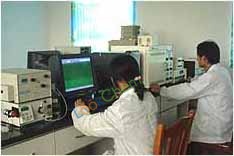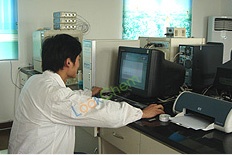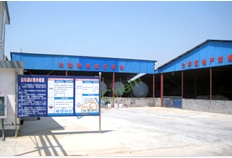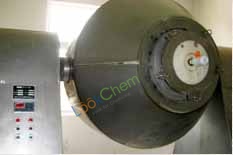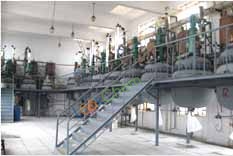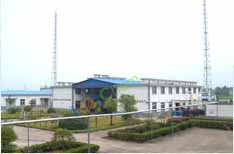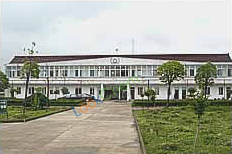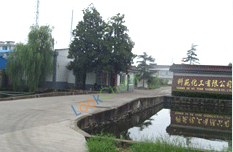l-serine msds
- Product Details
- Company Profile
The following MSDS l-serine detailed information are provided by Guangde Keyuan Chemical Company Ltd., one specialized titanium dioxide supplier in China.
Section 1: Chemical Product and Company Identification
Product Name: L-Serine
Catalog Codes: SLS4000, SLS1783, SLS3208
CAS#: 56-45-1
RTECS: VT8100000
TSCA: TSCA 8(b) inventory: L-Serine
CI#: Not available.
Synonym: L-2-Amino-3-hydroxypropionic acid
Chemical Formula: C3H7NO3
Section 2: Composition and Information on Ingredients
Composition:
Name: {L-}Serine
CAS #: 56-45-1
% by Weight: 100
Toxicological Data on Ingredients: L-Serine LD50: Not available. LC50: Not available.
Section 3: Hazards Identification
Potential Acute Health Effects:
Very hazardous in case of skin contact (irritant), of eye contact (irritant), of ingestion, of inhalation. Inflammation of the eye is characterized by redness, watering, and itching. Skin inflammation is characterized by itching, scaling, reddening, or, occasionally, blistering.
Potential Chronic Health Effects:
Very hazardous in case of eye contact (irritant), of ingestion, of inhalation. CARCINOGENIC EFFECTS: Not available. MUTAGENIC EFFECTS: Not available. TERATOGENIC EFFECTS: Not available. DEVELOPMENTAL TOXICITY: Not available.
Section 4: First Aid Measures
Eye Contact:
Check for and remove any contact lenses. Immediately flush eyes with running water for at least 15 minutes, keeping eyelids open. Cold water may be used. Do not use an eye ointment. Seek medical attention.
Skin Contact:
After contact with skin, wash immediately with plenty of water. Gently and thoroughly wash the contaminated skin with running water and non-abrasive soap. Be particularly careful to clean folds, crevices, creases and groin. Cold water may be used. Cover the irritated skin with an emollient. If irritation persists, seek medical attention. Wash contaminated clothing before reusing.
Serious Skin Contact:
Wash with a disinfectant soap and cover the contaminated skin with an anti-bacterial cream. Seek medical attention. Inhalation: Allow the victim to rest in a well ventilated area. Seek immediate medical attention.
Serious Inhalation: Not available.
Ingestion:
Do not induce vomiting. Loosen tight clothing such as a collar, tie, belt or waistband. If the victim is not breathing, perform mouth-to-mouth resuscitation. Seek immediate medical attention.
Serious Ingestion: Not available.
Section 5: Fire and Explosion Data
Flammability of the Product: May be combustible at high temperature.
Auto-Ignition Temperature: Not available.
Flash Points: Not available.
Flammable Limits: Not available.
Products of Combustion: These products are carbon oxides (CO, CO2), nitrogen oxides (NO, NO2...).
Fire Hazards in Presence of Various Substances: Not available.
Explosion Hazards in Presence of Various Substances:
Risks of explosion of the product in presence of mechanical impact: Not available. Risks of explosion of the product in presence of static discharge: Not available.
Fire Fighting Media and Instructions:
SMALL FIRE: Use DRY chemical powder. LARGE FIRE: Use water spray, fog or foam. Do not use water jet.
Special Remarks on Fire Hazards: Not available.
Special Remarks on Explosion Hazards: Not available.
Section 6: Accidental Release Measures
Small Spill:
Use appropriate tools to put the spilled solid in a convenient waste disposal container. Finish cleaning by spreading water on
the contaminated surface and dispose of according to local and regional authority requirements.
Large Spill:
Use a shovel to put the material into a convenient waste disposal container. Finish cleaning by spreading water on the
contaminated surface and allow to evacuate through the sanitary system.
Section 7: Handling and Storage
Precautions:
Keep away from heat. Keep away from sources of ignition. Empty containers pose a fire risk, evaporate the residue under a fume hood. Ground all equipment containing material. Do not breathe dust. In case of insufficient ventilation, wear suitable respiratory equipment If you feel unwell, seek medical attention and show the label when possible. Avoid contact with skin and eyes
Storage:
Keep container dry. Keep in a cool place. Ground all equipment containing material. Keep container tightly closed. Keep in a cool, well-ventilated place. Combustible materials should be stored away from extreme heat and away from strong oxidizing agents.
Section 8: Exposure Controls/Personal Protection
Engineering Controls:
Use process enclosures, local exhaust ventilation, or other engineering controls to keep airborne levels below recommended exposure limits. If user operations generate dust, fume or mist, use ventilation to keep exposure to airborne contaminants below the exposure limit.
Personal Protection:
Splash goggles. Lab coat. Dust respirator. Be sure to use an approved/certified respirator or equivalent. Gloves.
Personal Protection in Case of a Large Spill:
Splash goggles. Full suit. Dust respirator. Boots. Gloves. A self contained breathing apparatus should be used to avoid inhalation of the product. Suggested protective clothing might not be sufficient; consult a specialist BEFORE handling this product.
Exposure Limits: Not available.
Section 9: Physical and Chemical Properties
Physical state and appearance: Solid.
Odor: Not available.
Taste: Not available.
Molecular Weight: 105.09 g/mole
Color: Not available.
pH (1% soln/water): Not available.
Boiling Point: Not available.
Melting Point: Decomposes. (246°C or 474.8°F)
Critical Temperature: Not available.
Specific Gravity: 1.537 (Water = 1)
Vapor Pressure: Not applicable.
Vapor Density: Not available.
Volatility: Not available.
Odor Threshold: Not available.
Water/Oil Dist. Coeff.: Not available.
Ionicity (in Water): Not available.
Dispersion Properties: See solubility in water.
Solubility: Soluble in cold water.
Section 10: Stability and Reactivity Data
Stability: The product is stable.
Instability Temperature: Not available.
Conditions of Instability: Not available.
Incompatibility with various substances: Not available.
Corrosivity: Non-corrosive in presence of glass.
Special Remarks on Reactivity: Not available.
Special Remarks on Corrosivity: Not available.
Polymerization: No.
Section 11: Toxicological Information
Routes of Entry: Eye contact. Inhalation. Ingestion.
Toxicity to Animals:
LD50: Not available. LC50: Not available.
Chronic Effects on Humans: Not available.
Other Toxic Effects on Humans: Very hazardous in case of skin contact (irritant), of ingestion, of inhalation.
Special Remarks on Toxicity to Animals: Not available.
Special Remarks on Chronic Effects on Humans: Passes through the placental barrier in animal.
Special Remarks on other Toxic Effects on Humans: Nuisance dust.
Section 12: Ecological Information
Ecotoxicity: Not available.
BOD5 and COD: Not available.
Products of Biodegradation:
Possibly hazardous short term degradation products are not likely. However, long term degradation products may arise.
Toxicity of the Products of Biodegradation: The products of degradation are more toxic.
Special Remarks on the Products of Biodegradation: Not available.
Section 13: Disposal Considerations
Waste Disposal:
Section 14: Transport Information
DOT Classification: Not a DOT controlled material (United States).
Identification: Not applicable.
Special Provisions for Transport: Not applicable.
Section 15: Other Regulatory Information
Federal and State Regulations: TSCA 8(b) inventory: L-Serine
Other Regulations: OSHA: Hazardous by definition of Hazard Communication Standard (29 CFR 1910.1200).
Other Classifications:
WHMIS (Canada): CLASS D-2B: Material causing other toxic effects (TOXIC).
DSCL (EEC):
R38- Irritating to skin. R41- Risk of serious damage to eyes.
HMIS (U.S.A.):
Health Hazard: 2
Fire Hazard: 1
Reactivity: 0
Personal Protection: E
National Fire Protection Association (U.S.A.):
Health: 2
Flammability: 1
Reactivity: 0
Specific hazard:
Protective Equipment:
Gloves. Lab coat. Dust respirator. Be sure to use an approved/certified respirator or equivalent. Wear appropriate respirator
when ventilation is inadequate. Splash goggles.
Section 16: Other Information
References: Not available.
Other Special Considerations: Not available.
Verified Supplier
JiangXi Keyuan Biopharma Co., LTD.
- Country:
 China (Mainland)
China (Mainland) - Year Established: 2002
- Business License:

- Business type: Manufacturers
- Integral:


Contact Details|Similar Products

Escrow ServiceMore
Secure Your Orders With escrow More Transparency,Less Uncertainty


 Add to inquiry cart
Add to inquiry cart